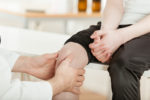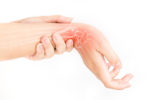Joint examination is the basic examination of any joint. No matter what joint you are looking at, the same process should follow. All joints will move in a set parameter, so they will have their normal, natural movement. In your joint examination, you will be looking for any signs of unnatural movement or pain. Identifying […]
Understanding Strains and Sprains
What is a Strain?
A strain occurs when a muscle or tendon is overstretched or torn, typically due to excessive force or overuse. Common areas affected include the back and hamstrings.
What is a Sprain?
A sprain involves stretching or tearing of ligaments—the tissues connecting bones at a joint. This injury often results from a sudden twist or fall, with ankles, wrists, and knees being most susceptible.
Signs and Symptoms
Both strains and sprains share similar symptoms, which may include:
- Pain at the affected site
- Swelling and inflammation
- Bruising or discolouration
- Limited mobility or difficulty using the affected joint or muscle
- Muscle spasms or cramping (more common in strains)
- Joint instability or a feeling of the joint giving way (more common in sprains)
First Aid Treatment: The RICE Method
Immediate and appropriate first aid can significantly impact recovery. The RICE method is a standard approach:
- Rest: Cease any activity that causes pain to prevent further injury.
- Ice: Apply a cold pack to the injured area for 15-20 minutes every 2-3 hours during the first 48 hours to reduce swelling. Ensure the ice is wrapped in a cloth to prevent skin damage.
- Compression: Use an elastic bandage to compress the area, helping to limit swelling. Ensure it’s snug but not so tight as to impede circulation.
- Elevation: Keep the injured limb raised above heart level to reduce swelling.
For detailed guidance on the RICE procedure, refer to our article on Strains and Sprains.
When to Seek Medical Attention
While many strains and sprains can be managed with self-care, it’s important to consult a healthcare professional if you experience:
- Severe pain or inability to bear weight on the affected area
- Numbness or tingling
- Signs of infection, such as redness and warmth
- No improvement after a few days of self-care
Prevention Tips
To reduce the risk of strains and sprains:
- Engage in regular stretching and strengthening exercises to maintain flexibility and muscle strength.
- Wear appropriate footwear that provides support.
- Use proper techniques during physical activities and sports.
- Avoid sudden increases in exercise intensity; gradually build up your activity level.
- Ensure your environment is free from tripping hazards.
Further Resources
For more information on related topics:
For comprehensive first aid training, consider enrolling in our First Aid at Work Annual Refresher (VTQ) course.


